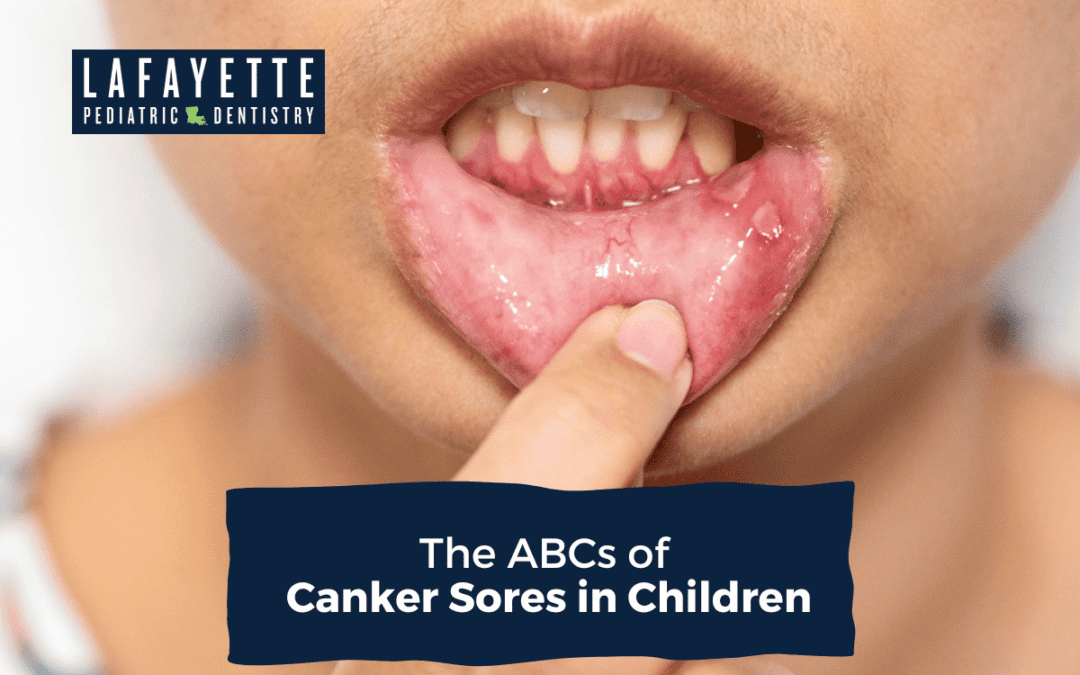Has your child suddenly lost interest in their favorite foods? Or maybe they’ve been complaining that their mouth hurts? Canker sores might be the culprit.
Canker sores, also known as aphthous ulcers, are fairly common in children. They can appear unexpectedly and can make eating, drinking, and even talking uncomfortable.
Below we explain in more detail about what they are, why they happen, and how to help your child feel better.
Spotting Canker Sores
Canker sores typically appear as round, open sores with a white or yellow center, surrounded by a red border that looks like a halo. While most are small, some canker sores can be on the larger side.
You’ll usually find these sores inside the cheeks, on the inner part of the lips, near the base of the gums, or hiding under the tongue.
They shouldn’t be confused with cold sores. Canker sores aren’t contagious, while cold sores usually pop up around the outside of the lips and can spread from person to person.
Cold sores are caused by a virus, while the cause of canker sores isn’t always clear—which we’ll discuss next.
Why Do Canker Sores Happen?
The exact cause of canker sores isn’t always clear, but several factors can trigger their appearance. Sometimes, a child might accidentally bite the inside of their cheek or lip while eating, which can lead to a sore.
Overzealous tooth brushing can also irritate the delicate mouth tissues. Lack of sleep and increased stress, perhaps from school or other activities, can also make kids more susceptible to canker sores.
But most canker sores clear up on their own within one to two weeks without special treatment. Larger canker sores might take a bit longer to heal completely.
Helping Your Child Feel Better When They Have Canker Sores
If you’ve had canker sores yourself, you know they can be uncomfortable for your child. The pain can make eating, drinking, and even talking difficult. Here are some ways to help them feel better:
Give Them Softer Foods
Offer soft, cool foods that won’t irritate the sore. Avoid rough, spicy, salty, or acidic foods. Yogurt, lukewarm soup, or mashed potatoes are good options.
Brush Extra Gently Around the Sore
Remind your child to be gentle when brushing near the canker sore. If needed, you can help them carefully brush around the sore.
Use Pain Relief
If the canker sore is bothering your child, consider an over-the-counter pain reliever like ibuprofen. There are also topical medications for canker sores that can be applied directly to make them less uncomfortable. Ask your pediatric dentist to prescribe one for you.
When to Seek Medical Advice
Most canker sores heal on their own within a couple of weeks. But, if the sore doesn’t improve or if your child frequently gets canker sores, it’s a good idea to check with your pediatric dentist. They can offer more advice and make sure there’s no underlying issue.
Canker sores are common and usually harmless, but your child might need some extra care while they heal. These simple steps can help make things easier for your child until the sore goes away.
If you have concerns about your child’s canker sores or overall oral health, Lafayette Pediatric Dentistry is here to help.
Our team of leading local pediatric dentists in the Acadiana area specializes in children’s dental care and can provide personalized advice.
Reach out to our office for more information or schedule an appointment online.
